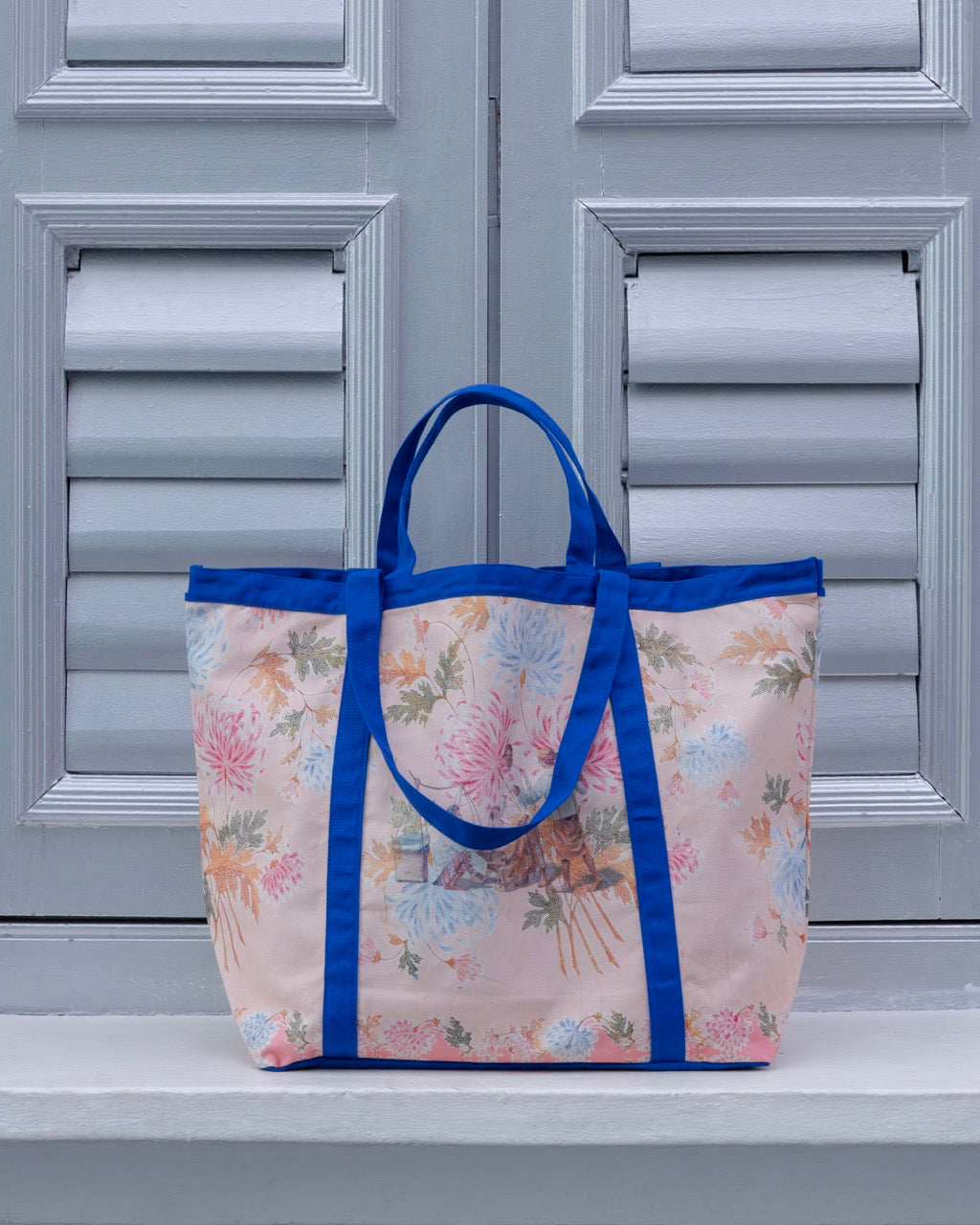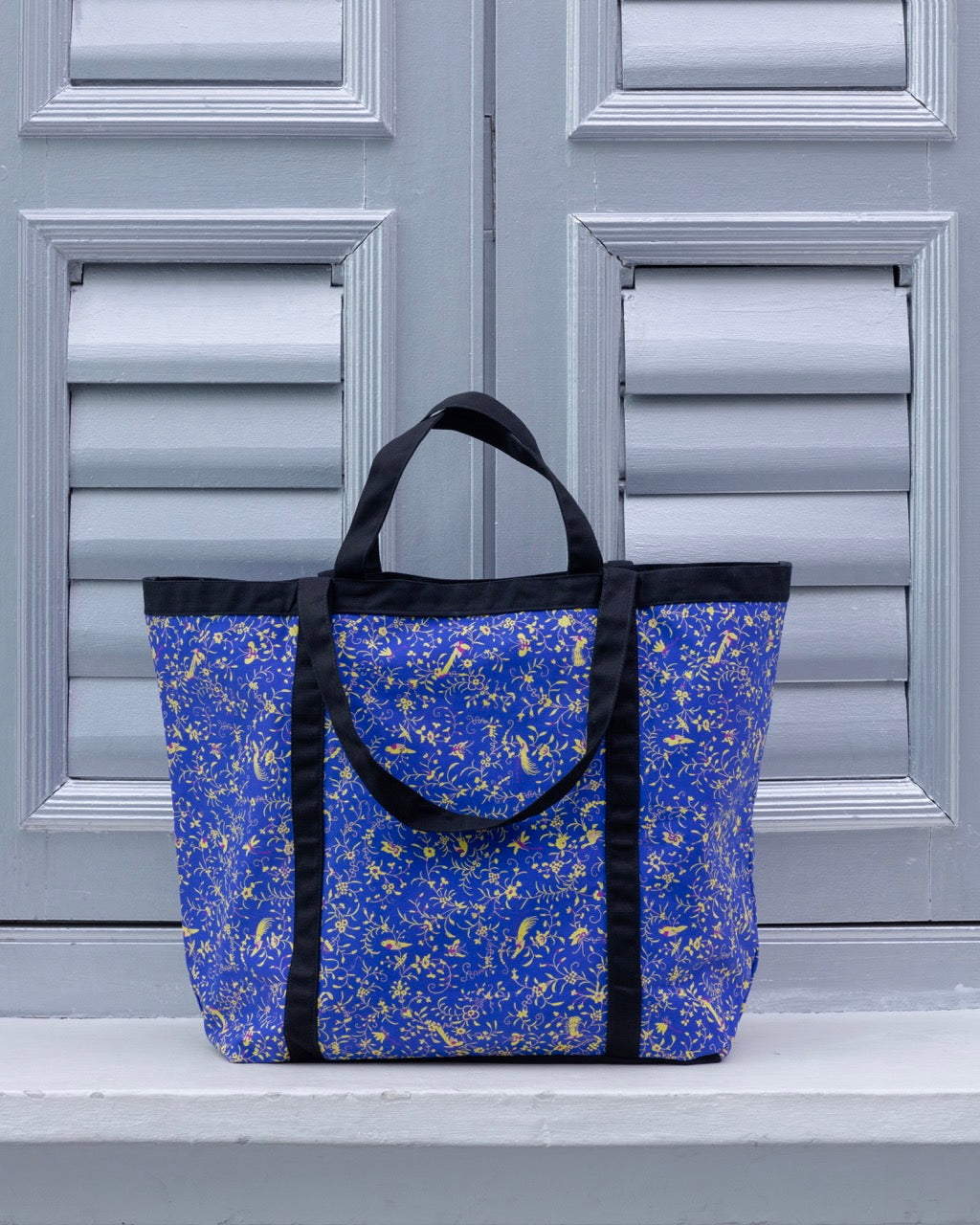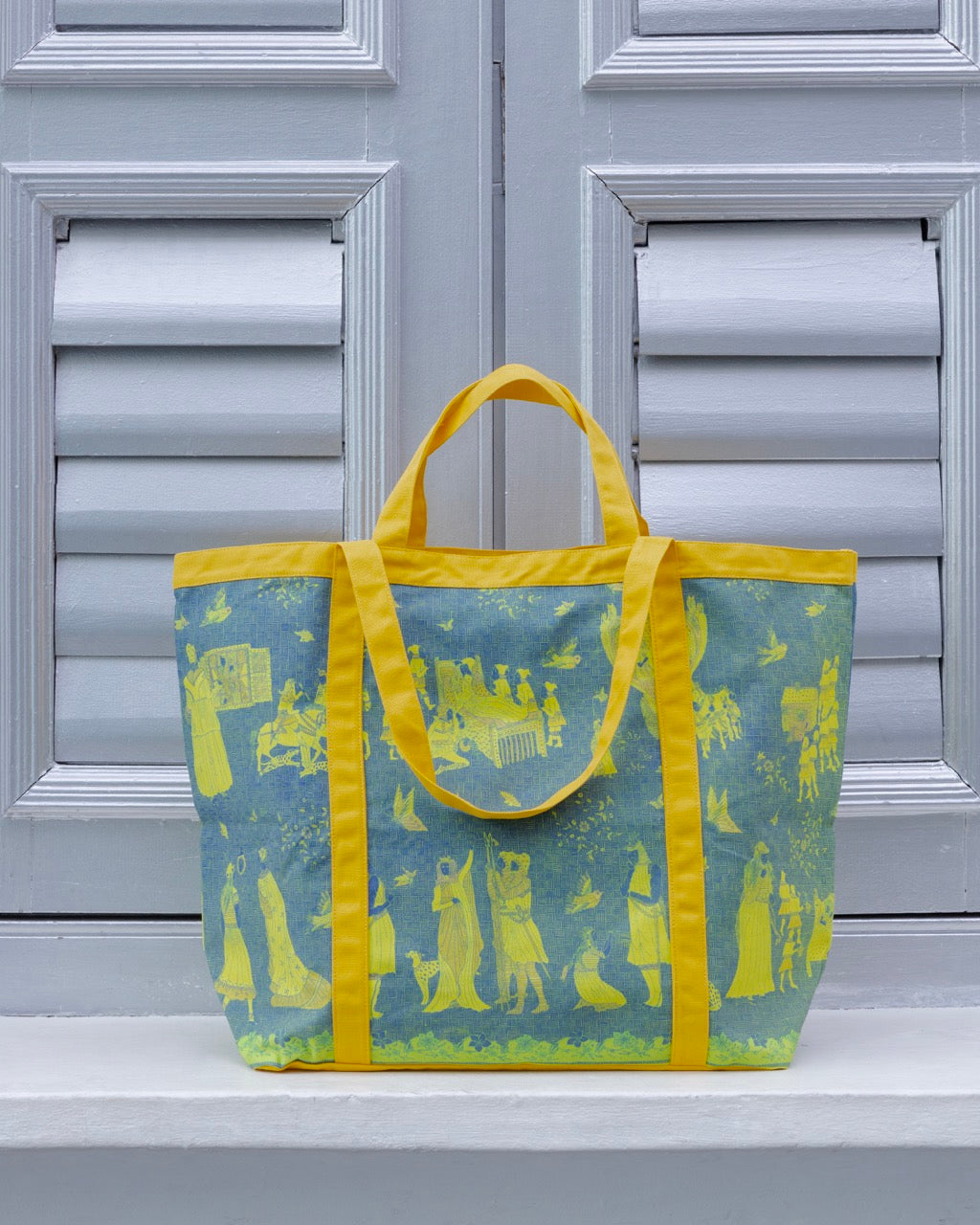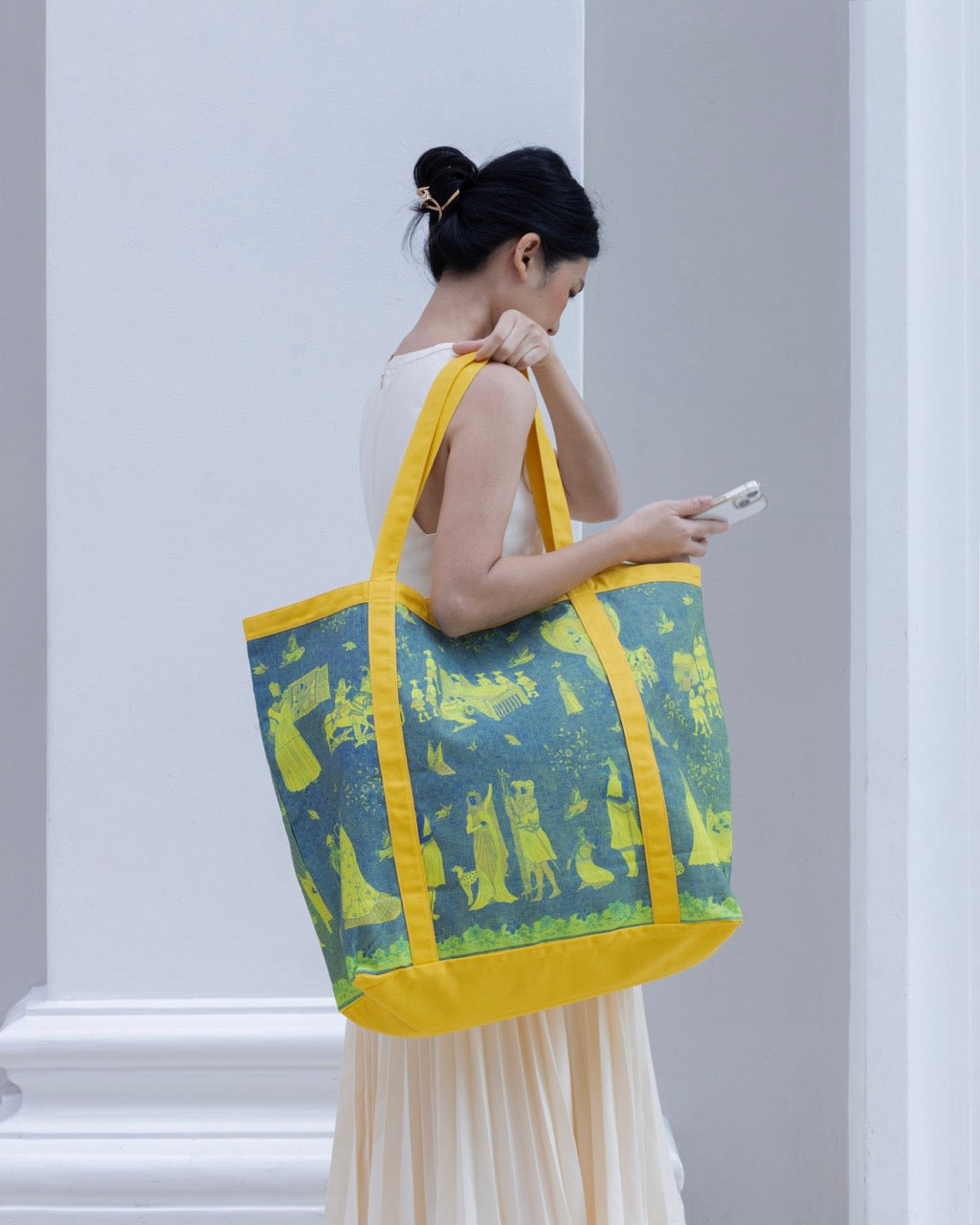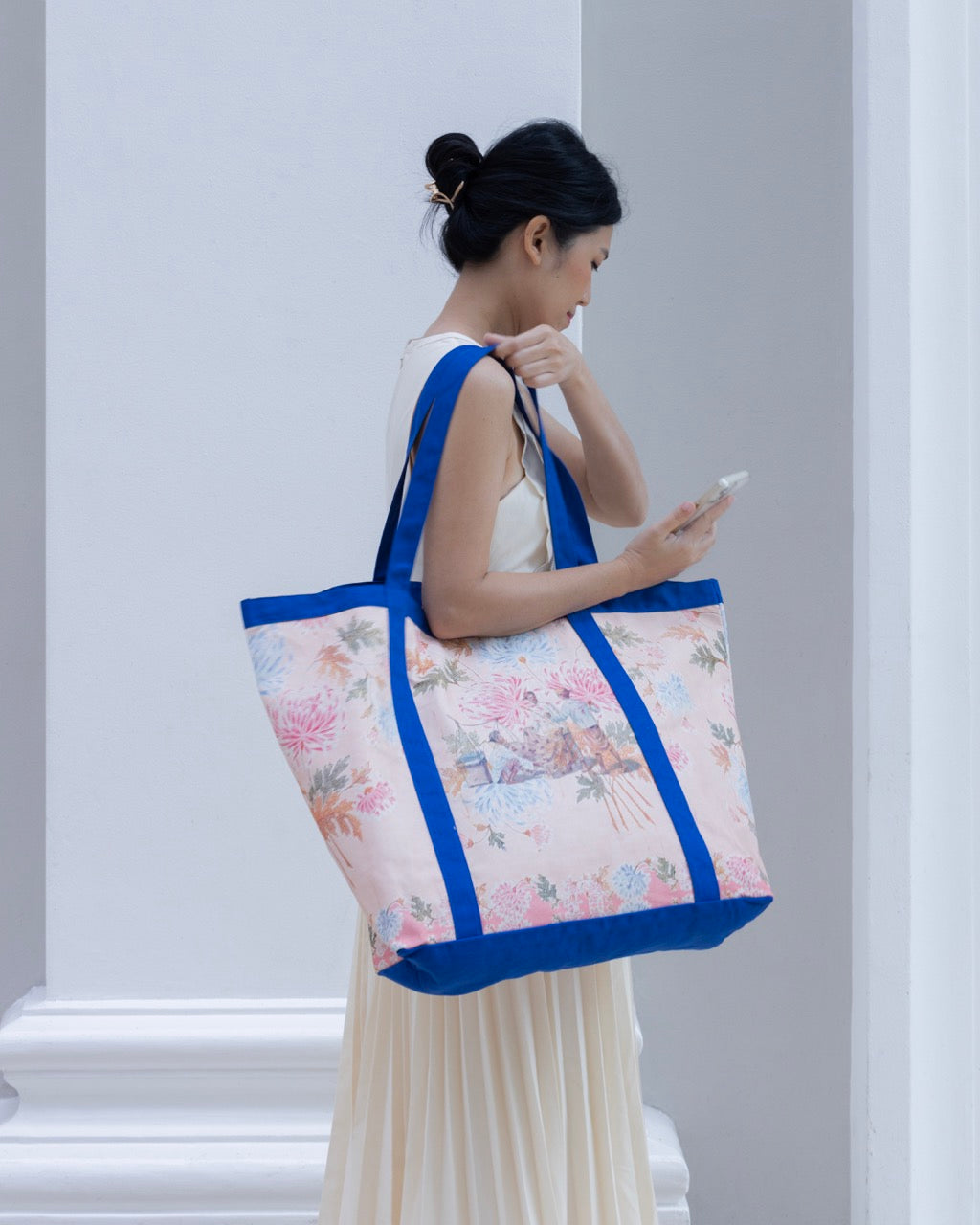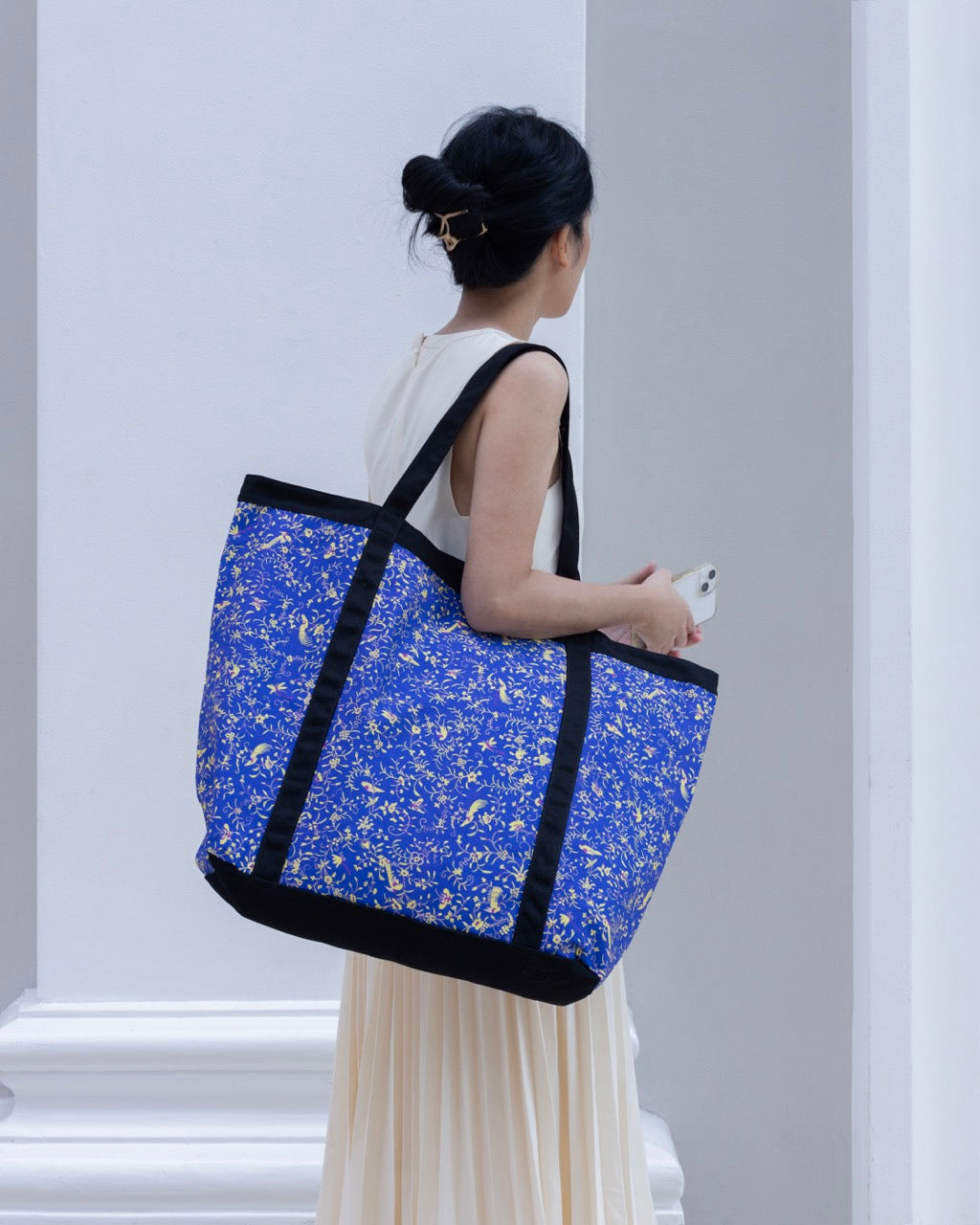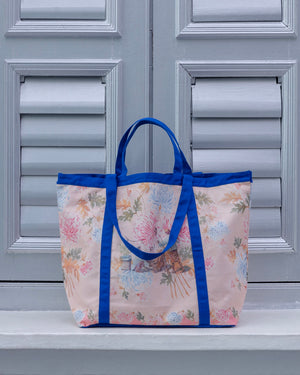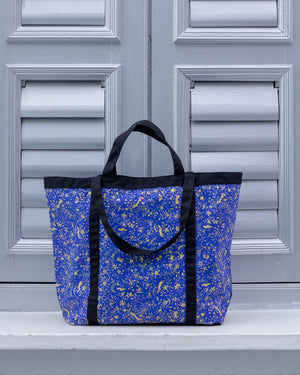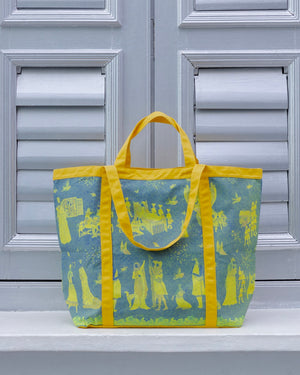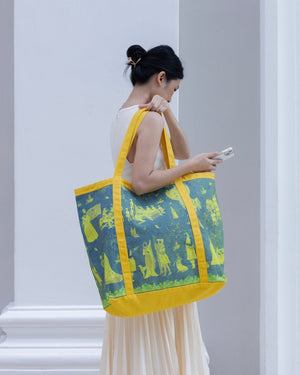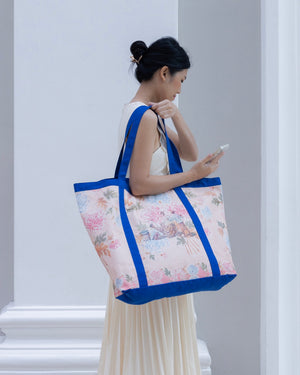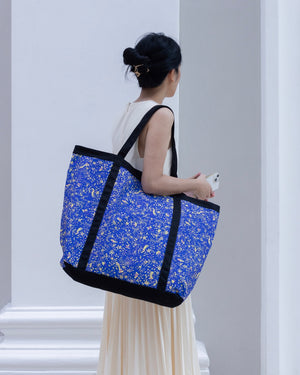NATIONAL COLLECTION X MUSEUM MARTKET SHOPPER
Rp 1.043.000,00 IDR
62 x 35 cm
SARI
India, 20th Century
Textile
Collection of Asian Civilisations Museum
2009-01600
The garo or gara is a sari decorated with Indo-Chinese Embroidery. It is strongly identified with women of the Parsi community. Parsis are followers of Zoroastrianism, one of the oldest religions in the world. They migrated to India from Central Asia between the 8th and 10th centuries. By the late 18th and 19th centuries, Parsis were instrumental in facilitating British trading interests in the China trade, trading opium, cotton, tea, and silk between China, India, and Southeast Asia.
A PEDLAR OF BATIK
Singapore/Malaysia
Late 19th-early 20th Century
Collection of the National Museum of Singapore
1991-00382
A Malay batik pedlar sells his wares to a prospecting customer. Hawking drinks, food, handicrafts, and various products was one of the many pavement occupations for common folk to earn a living in the early days.
SARONG
Pekalongan, Java
Late 19th-early 20th century
Textile
Collection of Asian Civilisations Museum
1997-04174
Gift of Mr. and Mrs. Andy Ng
This sarong would have been worn by a Nyonya (Peranakan woman) under a kebaya. The decoration features large floral bouquets with butterflies and birds. Nyonya-style sarongs are known for their bright and colourful designs, in shades of orange, yellow, pink and mauve, made possibly by chemical dyes imported from Europe in the 19th Century.


